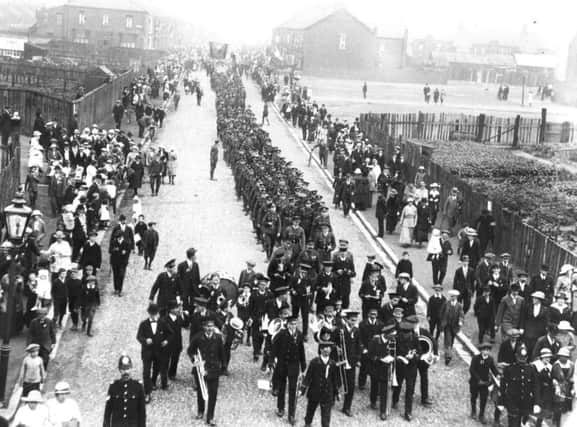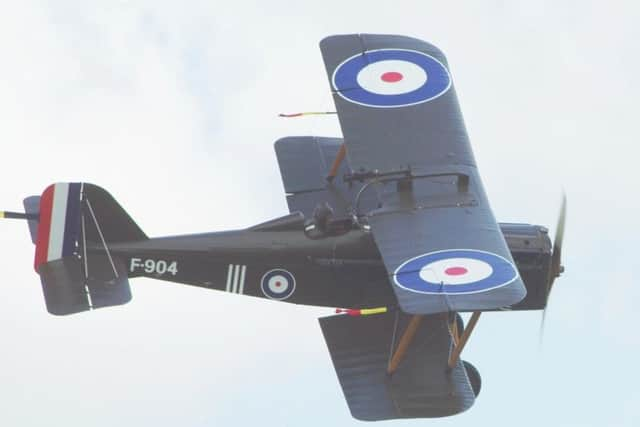The South Shields pilot who lost his life at 19 serving in the First World War


For, as local historian Dorothy Ramser explained on Tuesday, they learned that their daughter Jane had died serving king and country.
Cruel indeed, for the family was already in mourning following the death of her brother, just 11 days earlier.


This is his story.
Advertisement
Hide AdAdvertisement
Hide AdJane’s younger brother, William, born on August 12, 1899, first tried to volunteer for the war effort on November 4, 1915, by joining the Gordan Highlanders.
His height was noted as 5ft 6ins and his religion Presbyterian.
“He was so keen to do his bit that he lied about his age and declared that he was 19 years and two months, when in fact (after his dad intervened) he was found to be only 16 years and 9 months – and was sent home.
“Once back in Shields he returned to work as a ‘cutter’ tailor for William Wood Bros. which was a gentleman’s outfitters on Ocean Road in the town until 2001.
Advertisement
Hide AdAdvertisement
Hide Ad“He worked there from August 1915 until August 1917, when he finally got his way and joined the newly formed Royal Flying Corps, becoming one of the first among its prestigious ranks.”
On joining the corps, William received basic military training for two months, which consisted of military drill, physical exercise, military law, map reading and Morse code. After that he was sent to the School of Military Aeronautics for two months where he was taught aviation theory, navigation and photography, as well as artillery and infantry co-operation.
He was also given instruction on the working of aero engines and cockpit instruments, as well as the rigging of an aircraft.
“Once he completed this phase,” said Dorothy, “he was sent to a Training Depot Station to actually fly, where he had to do a minimum of 25 five hours in the air, both duel and solo on an Avro 504 aeroplane during a three-month period.
Advertisement
Hide AdAdvertisement
Hide Ad“The next two months consisted of 35 hours flying time with at least five of them spent in a modern frontline aircraft.
“Trainees were also expected to show proficiency in cross country and formation flying, reconnaissance and gunnery.”
Vickers and Lewis machine guns were also studied in the gunnery course.
Advertisement
Hide AdAdvertisement
Hide Ad“If cadets were successful, this earned them their commission.”
A Second Lieutenant was paid £5-12s-6d per week, with 12 shillings for each day they flew.
“The pilot then went on to learn air combat skills before being given their Pilot’s Wings. In all, it took about 11 months to be a pilot.”
Dorothy explained that upwards of 8,000 trainee pilots were killed during the First World War, prompting some training units to deduct money from the officers’ mess bills to pay for funerals.
Advertisement
Hide AdAdvertisement
Hide Ad“William was sent to 10th Cadet Wing for initial training at Farnborough on the October 22, 1917, and from there to Denham airfield on August 5, 1918.
“This was a school of military aeronautics, and from there he joined 1 Training Depot Station of 86th Squadron on April 11, 1018 at Stamford.
“He was made a Second Lieutenant on April 5 of that year.”
Sir Malcolm Campbell was an instructor at Denham and held world speed records like his equally famous son Donald, who was killed on Conistan Water in 1967.
Advertisement
Hide AdAdvertisement
Hide Ad“On October 31 1918 William was flying an SE5a, a frontline fighter aircraft (regarded as the Spitfire of its day and flown by top Allied Aces) out of RAF Northolt, towards Ruislip, when he attempted to climb too fast and the machine stalled, causing the aircraft to go into a slow spin from which William could not regain control.
“He hit the ground hard and at just 19 years old, was killed.
“I found no mention of any medals being issued, nor any recognition of his sacrifice and willingness to fight for his country – and so he lies with his sister in Harton Cemetery, two forgotten heroes.
“They are not alone.”
l Tomorrow Dorothy tells of the sacrifices of more South Shields men who took to the skies to fight the Germans in the First World War.